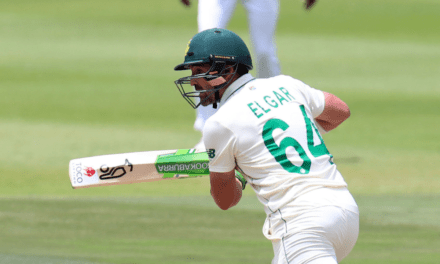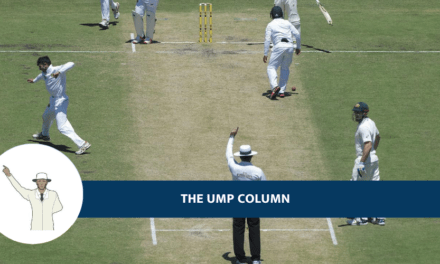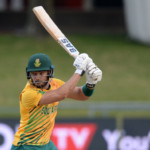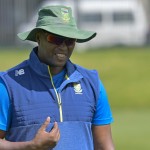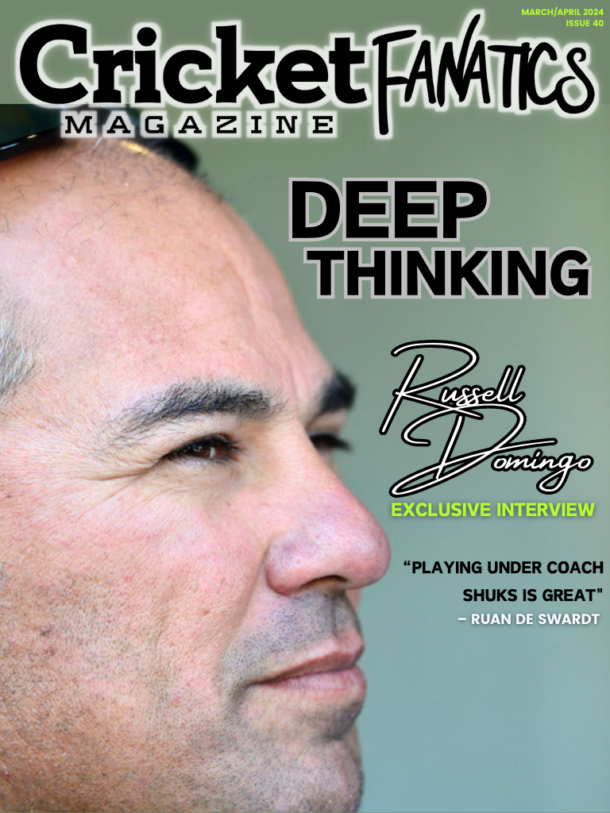In recent times, South African cricket has often been known to be very eventful, both on and off the field. There have been mountains, and there have been valleys.
However, one thing that has remained stronger than ever is the level of resilience and urge to make changes for the better.
Several youngsters have confidently risen through the ranks, while the relatively more seasoned professionals are ready to give back to the community they were part of, over the course of their careers.
Nkululeko Serame, who was a sometime feature for the Cape Cobras in addition to Boland, capped off nearly a decade and a half in the professional scene with a transition to coaching.
The experienced 35-year-old off-spinner has played a total of 106 games across all formats, but the last couple of years have been an exciting change in scenery.
“Since November of 2020 I have been coaching at the University of the Western Cape’s cricket setup, which is managed by Sport Skills 4 Life Skills and I made a conscious decision to commit myself fully to coaching,” said Serame to Cricket Fanatics Magazine.
Serame enjoyed helping newcomers make adjustments as well as learning their role as budding professional cricketers. Understandably, it’s far from easy, but strong mentorship and pedagogy will make sure everyone’s prepared for what will be in store.
The pandemic kept UWC’s progress in check, but it was the time for players and coaches to make do with what was practical.
“The 2021-2022 season for me was experienced from a coaching perspective. I was one of the assistant coaches of UWC’s High-Performance group and coached and mentored one of the club’s squads. Playing a role in the development of those young people was a journey I thoroughly enjoyed.
“It was really pleasing to see them enhance not only their technical skills but also their self and group-esteem, self-awareness, decision-making and social skills. We knew what we expected of each other and once we got everyone to trust the processes we put in place, players began to unlock their potential.
“In terms of what could have gone better, I would say that the COVID-19 restrictions made the pre-season preparations difficult, as we could not get the players into the gym regularly for their conditioning program, which resulted in injuries.
“So, in hindsight, I should have been more creative in terms of arranging the open-gym kind of environment where the players meet outdoors with the Strength and Conditioning coach and we do a similar thing to the gridiron groups.”
The 2021-2022 season was the first season after the domestic system underwent a major overhaul. The existing six-team franchise league was tabled, and the new plan included two divisions of professional and semi-professional sides.
The entirety of Serame’s playing career happened before the shakeup was imposed, and it was a fiercely competitive field. Now that the domestic structure has been expanded, more players will be able to throw their hats in the ring for higher honours.
But then again, there’s a noticeable gulf in quality between the Division 1 and Division 2 teams. The reorganization might be beneficial for making the game more inclusive in the long run, but the rather unbalanced nature across divisions further complicates the situation.
“As someone who played largely in the previous structure, I would say that the change in domestic structure has created the opportunity for players to showcase their potential against the usual players who were part of the six-team franchise structure. Particularly in the T20 format, where we saw Division 2 teams such as South Western Districts and Eastern Cape Iinyathi upset a few ‘big teams’.
“The other side of this coin though, is that there is a structural blind spot. The financial structure of the two tiers is skewed to reproduce too wide a gap between Division 1 and Division 2 teams.
“With all due respect, after watching closely the matches that were broadcasted on Pitchvision, I do not get the sense that whichever Division 2 team will eventually get promoted will have the venom to stay in Division 1 if they kept the same core of players. The financial disparity ensures that all the top quality players are signed in Division 1 and Division 2 was left with very few experienced players.”
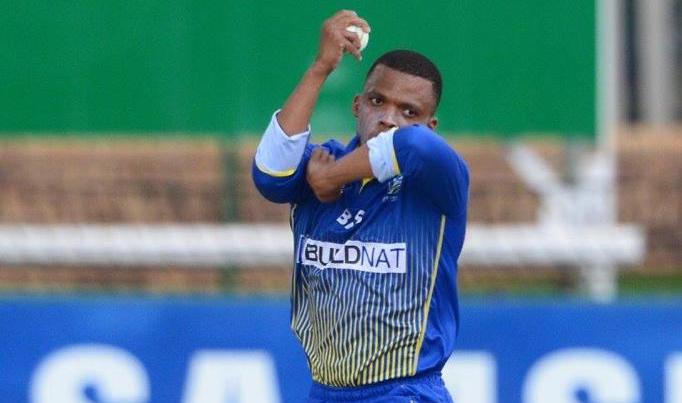
For Serame, the cricketing passion began during his preteen years, and his exploits at club level would gradually propel him to the limelight. Known for having a humble and down-to-earth disposition, his confidence level reached a new high after dismissing an in-form, experienced player who was fresh off a successful run.
He was always ready to accept advice, and his strong, unwavering focus would be a harbinger for more accolades ahead.
“I began playing cricket in Jouberton, a ghetto in the City of Matlosana, in North West Province. However, I was spotted at age 11 by two quality coaches, Richard Elms and Imran Shabir, who got me through NW’s youth development structures. They trained me until I was 19 and saw my potential, getting me to come and train with the NW Dragons B team when I was 14.
“The key milestones leading up to my professional debut were taking 3/16 against Vaal Reefs CC in the club Premier League as a 14-year old, and then taking a quick two-wicket haul against Merafong City with Graham Grace (who scored a century for NW Dragons the previous week in a Standard Bank Cup match against Eastern Province) going out to my first ball in that match. It was at that moment that I genuinely believed that I could go all the way and make a career in cricket.
“Before that, I had heard my coaches praising me and knew I was good, but at that moment I understood. The other milestones were taking 4/67 in 34 overs on the trot against Boland U19s in a 3-day match and then smacking a quick 35 against them as a 15-year-old, and then being selected for the SA Colts (after taking 16 wickets at an average of about 13) the next year, then SA Schools (14 wickets) the next two years, with being bowler of the tournament and player of the tournament in my last U19 National tournament, taking 20 wickets (three 5-wicket hauls) and being selected to go to the U19 World Cup the next year.
“Those are the moments that give you recognition as a young player and lead to my debut. The coaches gave me information and training, but I have always had that drive and was never afraid to make sacrifices and to go out of my comfort zone.”
Despite making significant headway in his career, there were roadblocks for Serame. He had tirelessly invested plenty of time and energy to evolve his game but was unable to make it to the 1st XI while attending the University of Western Cape. That moment really hit home, and he was already beginning to reassess his future, since he consistently put forward favourable results, but not to much avail.
But soon enough, he realized that a more patient approach could be helpful. After a short sabbatical from cricket, he would successfully return to the fold, and the new coach was ready to back his skill set.
It showed that the upper echelons of sport are often very unforgiving and even some of the best might receive the short end of the stick. And of course, it’s important not to have all your eggs in one basket, since the slightest sliver of misfortune can be very detrimental.
“I can only remember one setback. In 2010 I almost quit cricket and decided to focus on my law studies rather. I was disillusioned by how poorly I was managed by the then head coach at UWC CC. I knew I was the hardest working and most passionate player they had but he failed to see that in me and enhance it, choosing to omit me from the 1st XI.
“It was the most rejected I had ever felt as a cricketer and for the first time, things did not make sense to me how a team could sideline their most talented spinner. That treatment really left a painful wound in my soul.
“I overcame that by spending time with family back in my hometown and I was very fortunate that shortly after that, our next coach was Andy Moles, who has been my mentor ever since. He resurrected my cricket career. He saw potential in me and created an environment where that potential could grow. He is an excellent communicator and makes all his players feel wanted and appreciated, and as a result, we played for him and each other.
“He mentored me and taught me how to coach. If it wasn’t for him, I would have quit cricket and been competitive elsewhere in life where my fate does not depend on the subjective opinion of a ‘decision-maker’. Sport is very hard and the more passionate you are, the more you risk being hurt by something as simple as a lack of recognition.”
Serame reflected on his career, which had many moments to savour. From his time in the national U19 side in 2006, making his franchise debut, and developing a better understanding of his game and what he had to offer, he’s full of appreciation for the opportunities that he earned.
At the same time, he placed more emphasis on the fact that top-flight sport is just as much a mental challenge as it is a physical challenge.
“Over the past 15 years, I would say that my highlights were making my debut for the KZN Dolphins against Highveld Lions and having the backing of Graham Ford as a coach, and the support of senior players such as Lance Klusener and Dale Benkenstein. There was also a 4-day match (in 2008) where I came in at number 11 and batted for 22 overs to save the team from defeat and draw the game against Bangladesh Academy in Khulna, playing for the South Africa Academy.
“I had many other special moments in club cricket and in provincial and franchise cricket too, I got better with experience and understanding of self, so the cricket performances are many. In the end, I think the biggest highlights are the ones off the field. The lessons one learns about oneself when reflecting upon how one handled those moments technically, tactically, physically, mentally and spiritually.”
In addition to the new 15-team system, there’s been extensive planning for a new flagship T20 league. The Mzansi Super League had two reasonably successful editions, but the pandemic brought the momentum to a complete standstill. In addition, Cricket South Africa was at a loss.
The introduction of the new T20 league will require prudent planning as well as greater outreach. It’s to be noted that a lot of the cricketers that succeed professionally and in some cases reach national recognition are products of an elite group of schools. Expanding the game at grassroots level to appeal to people of all socioeconomic backgrounds will be instrumental.
“The new T20 league that will supersede the MSL is said to be entertaining and that it will fuse cricket with the entertainment industry. I will be looking forward to seeing how that manifests. It still remains an exciting unknown to us.
‘What I think would enhance it though, is if the teams built good relationships with the communities they represent. Much like how the big football teams have a close relationship with the communities around them. A place like Soweto alone has over 4 million people, and to put some perspective, that’s around 80 per cent of New Zealand’s total population!
‘Imagine if some of the Johannesburg franchise’s matches were to be played in an upgraded Soweto Cricket Oval, that would be revolutionary for the spread of cricket in South Africa!!! The stadium would be at maximum capacity whilst allowing for healthy interaction among South Africans from different communities. Given South Africa’s racial tensions, cricket would be a leader of better human-to-human interaction.”

A discussion on South African cricket is incomplete without mentioning demographics – it’s an integral element. Over the years, the conversation has often revolved around how to effectively and efficiently help underprivileged communities.
Finding a means to make cricket a more inclusive sport is not just limited to South Africa. For example, there have been cases of offensive behaviour in English cricket, namely Yorkshire County Cricket Club.
When Azeem Rafiq, a former cricketer for Yorkshire, recounted his harrowing experiences, it was a direct call to action to right the inexcusable wrongs of the past and build a new, accommodating, anti-racist team culture.
Cricket aside, Serame is an advocate for the High Court and has always had a strong desire to add to his already vast knowledge base. He explained the origins of cricket, as well as emphasized the need to actively root out existing prejudice.
At the end of the day, cricket has players and fans of a wide spectrum of backgrounds, and making the sport a good-natured place for all will be a progressive leap forward.
“Apart from cricket, coaching and being a lawyer, one of my activities has been in research. As a student of the Social Sciences and the Humanities in general, I would say that the key steps to making the game more inclusive are to use the game in such a way that it facilitates the inclusion of marginalized groups. Let me give a combination of history and sociology, to further elaborate on this:
“Given the history of how the game of cricket was spread through colonial conquest, the game was initially meant for the elite amongst British society, meaning that anyone who fell outside of that category, like colonial subjects of Asian and Afro-Caribbean or even Aboriginal and Maori descent, was automatically excluded from playing.
“Due to the racist underpinnings of colonial thinking, those who were not of European descent were perceived to be ‘savages’ or ‘uncivilized’, and therefore even when they were later allowed to participate, their languages and cultures, for example, were still excluded they had to mimic British language and culture, meaning that they were still not fully welcome.
“These undertones continue to exist until today, we have heard how in England, players of African and Asian descent have recently shed light on their experiences of exclusion, such as ‘There are too many of you lot here. We need to do something about it’, and ‘What kind of a name is Cheteshwar?’.”
Furthermore, the integration of languages aside from English will seamlessly garner more and more interest among those who don’t necessarily speak English as a first language.
For example, South Africa is the country with the second-most number of official languages. And only recently has there been a change in dynamic.
If we look at SuperSport, there’s commentary in English, Afrikaans, and isiXhosa. It was only in 2021 when isiXhosa got added, when journalists Mluleki Ntsabo and Sixolele Sotyelelwa were recruited.
“From a Sociology perspective, the game can enhance inclusivity by using the media to re-educate society differently. Media is part of the institutions of popular culture and influences and shapes opinion. For example, take a developed country like Switzerland. 60% of its population speak German, 24% speak French, around 12% speak Italian and the rest speak Romansch. All four of those languages are used in their media and interviews.
“Now, on the other hand, take South Africa, which has 11 official languages. In South Africa, English is the mother tongue of only 9% of the population, yet in order for people to become professionals and to communicate with the media, people are kind of ‘forced’ to learn English.
“The world has never heard a South African player like Lungi Ngidi speaking isiZulu in a post-match interview, for example. So, if we had coaches and journalists who were multilingual, they would be able to communicate cricket to a much larger number of people in the SA context.
“Look at Pakistan for example, their journalists interview their players in Urdu, Punjabi or Pashto for example, thereby giving their communities access to cricket.”
There still exist a number of double standards, and overcoming them all will be a long process. However, Serame has only grown more and more hopeful, a quality that has only strengthened as his career progressed.
Here’s yet another example – the women’s game has seen only five Test matches in the past three years. There have been vociferous calls to provide more opportunities in the longer format, something that still has yet to come to fruition.
A new-look South Africa recently drew a Test match against a very strong England side, and there were multiple star performances from players from both teams. In addition, airing these matches on free-to-air television will expand the viewership from the current situation.
“Even what we have been socialized into thinking is ‘good food’ or a ‘good breakfast’, is often from one culture. These are just a few examples that we could create an inclusive space, through multilingualism – what we say and how we name teams – and also through food sold and advertised at stadia as well as where the various venues are built, if we take the earlier example of Soweto.
Other aspects of inclusivity are along gender lines as well as including or advertising blind cricket etc. All these need imaginations and strong leadership.”
There’s no doubt at all that one can learn plenty from Serame’s personal narrative as well as his astute, intelligent assessments.
It’s 2022, and we all need to open our minds as well as address the problems that need to be rectified. Collective compassion and benevolence will go a long way.



